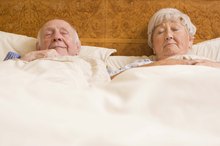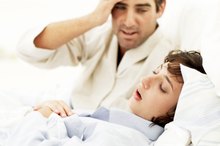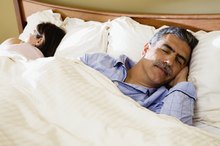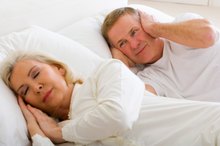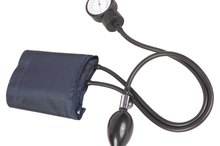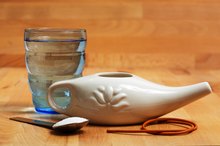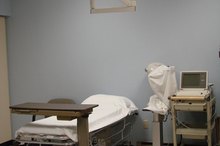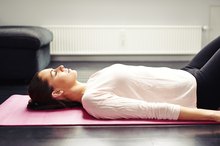Homemade Sleep Apnea Devices
If you have been diagnosed with sleep apnea, determine which treatment is best. If you have obstructive sleep apnea, treatment will depend on the structure of your air passages and medical history 2. There are homemade sleep apnea devices that will help, once you know what will work for you. These devices are intended to widen the air passages to make breathing while sleeping continuous. If you have central sleep apnea, your brain forgets to tell you to breathe. This requires a different kind of treatment.
If you are experiencing serious medical symptoms, seek emergency treatment immediately.
Don't Roll
Tie a tennis ball in a sock and tie it across your waist so that when you roll over it will force you not to sleep on your back. You will change positions often during the night. Sleep apnea happens more often when you sleep on your back, so the tennis ball stops you from lying on your back and forces you to go back to your side 2. This can reduce the number of apneas you have in one night.
- Tie a tennis ball in a sock and tie it across your waist so that when you roll over it will force you not to sleep on your back.
- Sleep apnea happens more often when you sleep on your back, so the tennis ball stops you from lying on your back and forces you to go back to your side 2.
Keep Your Mouth Shut
How to Sleep When Ears are Plugged
Learn More
Use simple straps that keep your mouth closed. It keeps the lower jaw upright which increases the airway space. Using straps reduces the number of apneas you have in the night and can eliminate snoring. It will lower blood pressure and allow for more oxygen in the bloodstream.
- Use simple straps that keep your mouth closed.
- Using straps reduces the number of apneas you have in the night and can eliminate snoring.
Don’t Lie Flat
If you are elevated from the waist up, the airways may not collapse as often, reducing the apneas. You need to use something hard, like a foam wedge, not soft pillows that may worsen the apnea by allowing the chin to move towards the chest. Also, elevate the head of your bed 4 to 6 inches to help stop snoring. Loud snoring is a sign of sleep apnea or can cause it, and treating the snoring may stop sleep apnea 2.
- If you are elevated from the waist up, the airways may not collapse as often, reducing the apneas.
Didgeridoo
Cures for Snoring When Exhaling
Learn More
Play the didgeridoo, long hollow pieces of hardwood (eucalyptus, bamboo) which can be purchased online. The British Medical Journal reports that daily practice on the Australian wind instrument reduces sleep apnea, which in turn reduces sleepiness in the daytime as well as snoring at night 2.
Related Articles
References
- homeremedies.com
- Homeremedies.com: The sleep apnea cure
- National Heart, Lung and Blood Institute. Sleep apnea.
- Camacho M, Certal V, Abdullatif J, et al. Myofunctional therapy to treat obstructive sleep apnea: A systematic review and meta-analysis. Sleep. 2015;38(5):669–675. Published 2015 May 1. doi:10.5665/sleep.4652
- Xu J, Niu YX, Piao XM, Liu Z, Wu LZ, Liang RL. Effect of acupuncture on blood oxygen saturation in patients of obstructive sleep apnea-hypopnea syndrome. Zhongguo Zhen Jiu. 2009 29(1):84-6
- Lv ZT, Jiang WX, Huang JM, Zhang JM, Chen AM. The clinical effect of acupuncture in the treatment of obstructive sleep apnea: A systematic review and meta-analysis of randomized controlled trials. Evid Based Complement Alternat Med. 2016;2016:8792167. doi:10.1155/2016/8792167
- National Center for Complementary and Integrative Health. Passionflower. Updated September 24, 2017.
Writer Bio
Robin Reichert is a certified nutrition consultant, certified personal trainer and professional writer. She has been studying health and fitness issues for more than 10 years. She holds a Bachelor of Arts in psychology from the University of San Francisco and a Master of Science in natural health from Clayton College.
